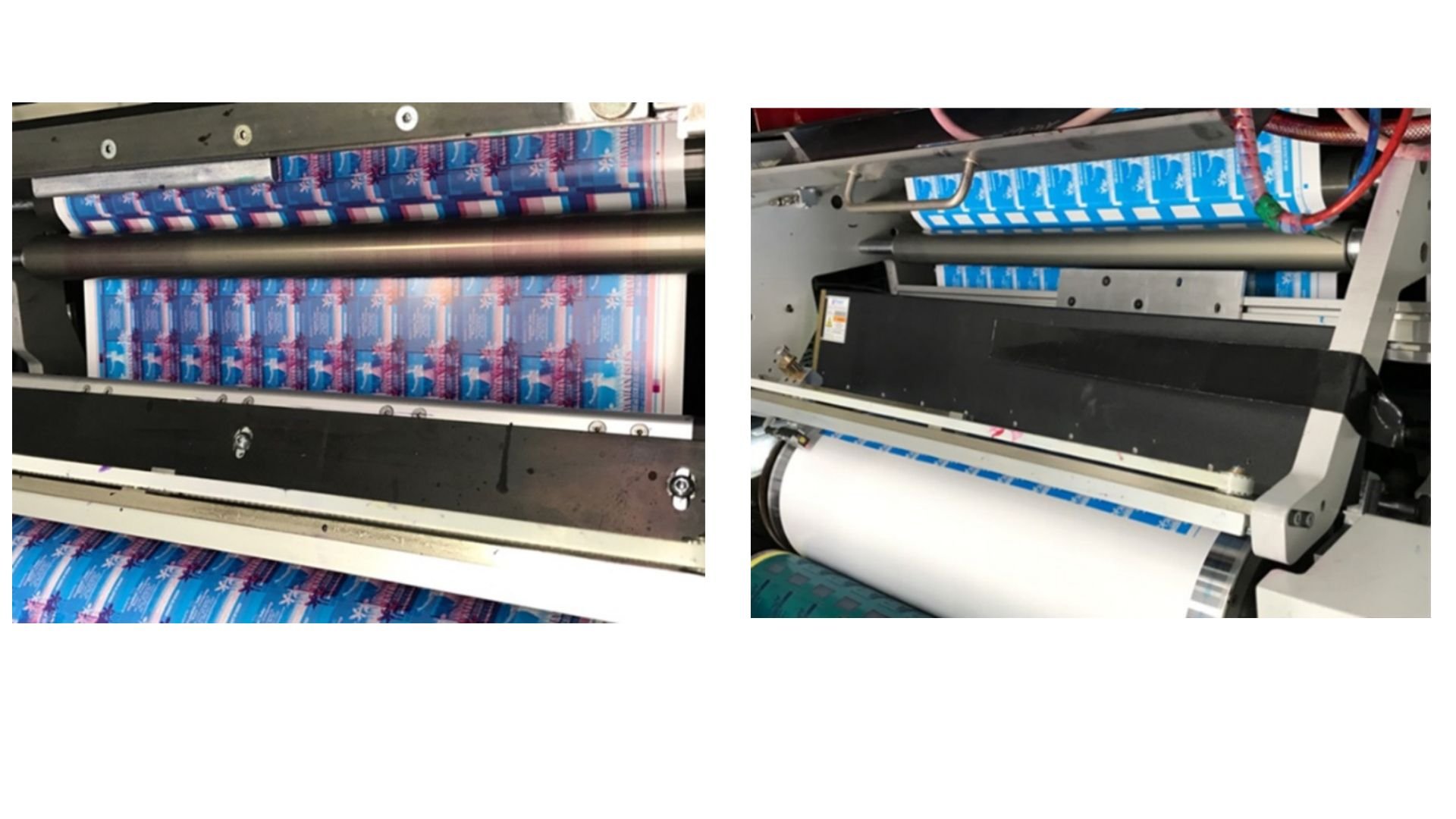Understanding Peak Irradiance & Energy Density of UV LED
Technical Considerations for Integrating UV LED Curing
There are two key parameters of an LED lamp to understand for the purposes of optimizing cure and establishing a process window. Identifying this process window will result in the most durable and desirable finish, as well as acceptable adhesion and surface cure: peak irradiance and energy density.
Irradiance (W/cm^2) is the punching power to kick start the polymerization process where photoinitiators cross-link acrylate monomers and oligomers in UV curable adhesives, coatings, and inks. There is a minimum threshold irradiance value needed to start this process, and anything greater than the minimum threshold will turn into heat. It is not a given that higher irradiance will enable faster cure speeds.
Energy density (J/cm^2), commonly referred to as dose, is the time integral of irradiance that can be calculated by multiplying irradiance (W/cm^2) by time as depicted in Fig A. It is the total number of light photons that hit a specific area within a specific duration of time. Energy density is the key to ensuring adhesion and cure at high speeds.
External Factors That Affect Energy Density
· Dwell Time is the duration of time the ink, coating or adhesive is exposed to UV energy. Dwell time is affected by line speed and size of the emitting window. Line speed of 50m/min (164 feet) exposed to a 20mm (0.78 inch) wide UV LED curing lamp will have the same dwell time as material running at 100m/min (328 feet) exposed to a 40mm (1.57 inch) wide UV LED curing lamp.
o In Fig. B, the red line represents an LED lamp with 16W/cm^2 peak irradiance and 20mm wide window vs. the blue line, representing an LED lamp with 12W/cm^2 and 40mm wide window.
o Energy Density of the blue line is 65% greater than the red line despite 25% lower Peak Irradiance.
· Total Number of LED Lamps: Adding more rows or banks of LED curing lamps will increase the overall energy density exposure of your substrate. LED lamps are very compact and adding additional rows can be done easily.
Are all UV curing light sources created equally?
Not all LED lamps with the same peak irradiance have the same total curing power. Phoseon customers have measured significantly higher energy density compared to competitors that have the same peak irradiance listed on the spec sheet. LED lamps with low energy density often have focusing optics that artificially bump up peak irradiance.
There are many factors within Phoseon LED lamps that ensure maximum energy density:
· Number of Diodes – Total number of diodes has a direct impact on energy density. Phoseon sources diodes that allow tight packing into small spaces. Maximum packing density, the total number of diodes per square area, ensure more photons of energy delivered resulting in higher energy density.
· Power & Efficiency of Diodes – Since Phoseon has been building LED curing lamps since 2002, the supply chain has access to purchase the highest efficiency diodes on the market for maximum UV output per electricity input. Phoseon electrical conversion rate is greater than 50%.
· Method & Packaging of LEDs – Phoseon patented SLM (Semiconductor Light Matrix)™ is designed to arrange native diodes to maximize light output, uniformity and optimum heat management. Nobody else in the market can offer the same design, materials or arrangement of diodes.
· Heat Management – Phoseon Engineering has learned from experience how best to maximize heat dissipation. This allows Phoseon to drive diodes to maximize energy output while keeping lifetimes of 60,000+ hours.
On many occasions Phoseon customers have found they can achieve full cure at desired speeds at lower irradiance levels than originally expected. This enables them to use lower power and more cost-effective LED curing lamps. On the flip side, high irradiance, wide window LED lamps generate high energy density to cure at high speeds. Either way, most applications obtain a maximum bang for their buck using Phoseon LED curing lamps with high energy density.
Flexographic Application Example
In a flexographic application, the presence of tracking, a term for uncured ink present on idle rollers, was clearly shown with a unit with 17W/cm^2 of peak irradiance as shown in the first picture on the left. On the right is the same line with a Phoseon 16W/cm^2 LED lamps and no tracking was present as seen in the picture. Energy Density was measured to be 30% higher than the competitive lamp despite lower peak irradiance.
Conclusion
Finding the perfect combination of irradiance, dwell time, and energy density will vary given the unique nature of each application (substrate material, ink/coating/adhesive, environmental conditions, line speed). Working closely with your UV chemistry supplier and Phoseon Technology will result in a synchronized solution. In all cases processes using UV LED lamps with higher energy density will enable faster, more efficient, and predictable cure at higher speeds.




